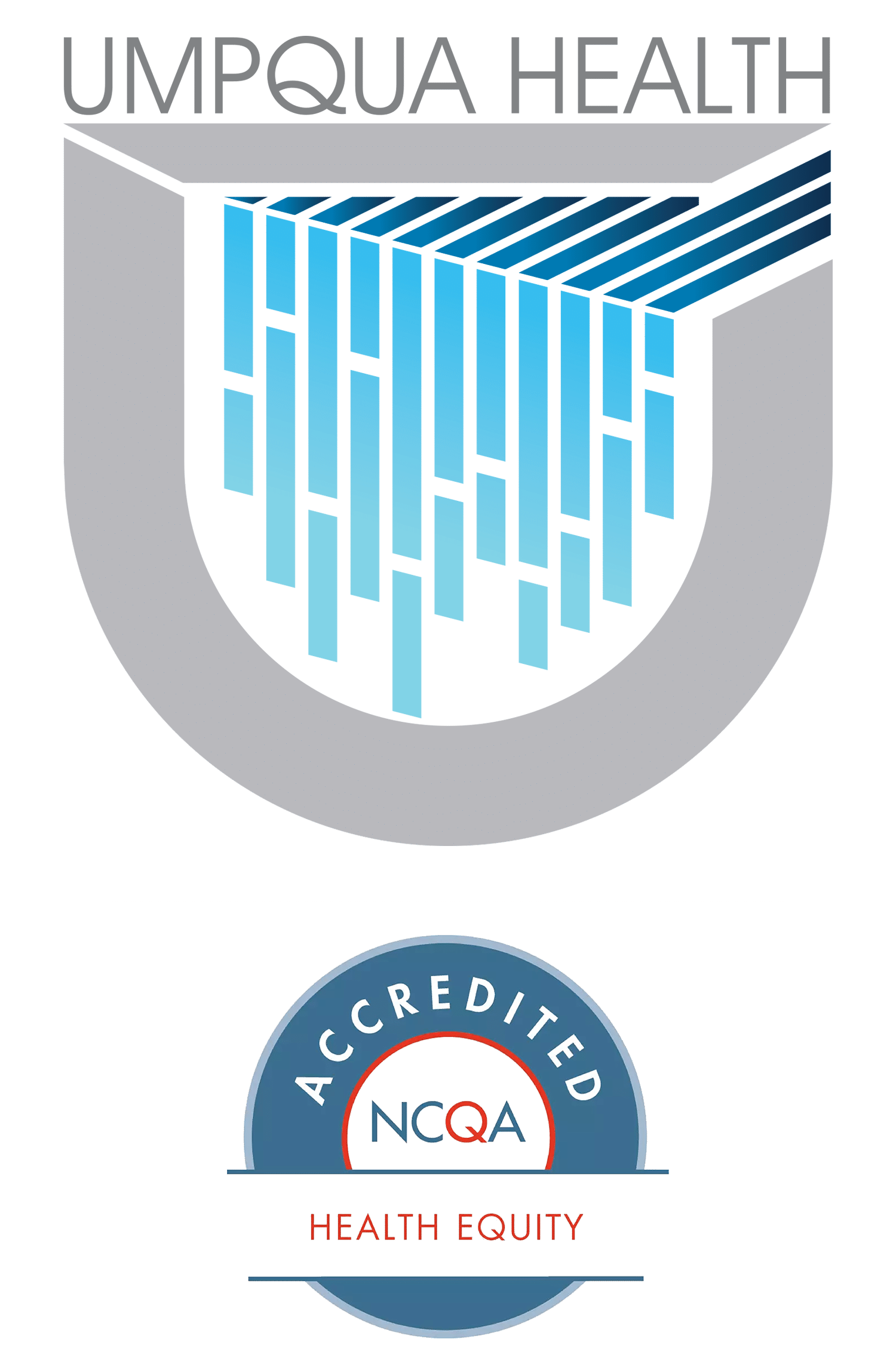Provider Newsletter July 2018

Practice Tactics
CCO Quality Metrics for 2017
Umpqua Health Alliance (UHA) has met the benchmark or improvement target on 14 of the 17 CCO incentive measures for calendar year 2017; earning 100% of the quality pool. UHA final metrics are available here.
Practices will receive their share of these funds, as approved by the Umpqua Health Board, based on the 2017 CCO Quality Metrics Program, no later than Friday, July 13, 2018.
Congratulations on improving the care to our Douglas County members! Quality improvement never ends, as each year builds on the momentum of the previous one.
Home Sleep Study Redux
In spite of the ready availability of home sleep studies without a prior authorization, we still see a lot of PCPs continue to utilize overnight oximetry as a screening test. Oximetry is only one channel of a home sleep study (three to four channels) that can provide a definitive diagnosis of OSA. The use of OVN oximetry is unwarranted in this circumstance. As discussed last month, if OSA is diagnosed with home study, then the next step is a three month trial of auto-titrating PAP.
Pediatric OSA is the primary indication for Tonsillectomy & Adenoidectomy. Facility-based sleep tests are challenging for children, but the Pediatric Sleep Questionnaire (PSQ) (which you can find here) developed at the University of Michigan may predict OSA-related neurobehavioral morbidity and its response to adenotonsillectomy as well or better than does polysomnography.
Understanding the Prioritized List & Prior Authorization Grid
The following are some of the most common FAQ’s we have received from provider offices about using the UHA Prior Authorization Grid and the OHP Prioritized List of Health Services.
Please review the most current version of the prior authorization grid and also determine diagnosis/procedure code pairing on the Prioritized List of Health Services.
The Prioritized List of Health Services is maintained by the Health Evidence Review Commission (HERC) and helps determine funding/coverage. The prior authorization grid is maintained by Umpqua Health Alliance (UHA) to manage utilization and to determine the medical appropriateness of services or items.
Please see the provider page of our website here.
Please see the provider page of our website here.
The Prioritized List of Health Services is located on the Oregon Health Authority website, located here.
Oregon’s legislature approved funding for lines 1-469 of the Prioritized List of Health Services effective 1/1/18. The list is maintained by the Health Evidence Review Commission (HERC). UHA does not own or maintain the list.
UHA is following the Oregon Health Plan (OHP) rules which state that covered services are those medically necessary and appropriate health services and items described in the Prioritized List of Health Services above the funding line set by the legislature.
When typing in a code, the system will start loading results as you type. If you type too quickly, the system may not be able to process quickly enough. Please double check your entries.
You can use our sign up form. Previous newsletters can also be found on our provider page.
These are usually related to diagnostic services which are needed to establish a diagnosis. Diagnostic services are covered regardless of where the diagnosis appears (or doesn’t appear) on the Prioritized List of Health Services.
Review the notification you received with the determination. This should indicate what was denied, but also what was approved. If you still have questions, please contact Member Services at (541) 229-4842.
This is when a diagnosis code and a procedure code both appear on the same line in the prioritized list.
The Prioritized List of Health Services has 660 lines ranked based on clinical effectiveness and cost-effectiveness. Lines 1-469 are funded, with these condition-treatment pairs placing a higher emphasis on preventive services and chronic disease management. Utilization of this ranking can lead to reducing expensive and less effective treatment provided in the crisis stages of diseases.
If OHP/UHA is not the primary insurer, then a prior authorization is not required. If the prior insurance does not cover the requested service/item, then provide the non-coverage information (EOB) to UHA and request a prior authorization.
You may select the “claims” option by calling Member Services at (541) 229-4842.
1. From the main menu, select “Provider Services”
2. Select “Health Systems Division Line Search”
3. Search by diagnosis code and/or procedure code
First and foremost, call your primary care physician (PCP). They will assess your symptoms and determine the likelihood of you having it. Stay away from other people and “self-isolate” as much as possible.
On the Lookout
Sexually Transmitted Infections (STI): Please Report
There has been a significant increase in STIs throughout Oregon (Oregon CD Summary on STIs, February 2018). Between January and June 2018, Douglas County has had 168 cases of chlamydia, 56 cases of gonorrhea, and four cases of syphilis, which represents a 7% decrease in chlamydia, a 40% increase for gonorrhea and a 300% increase for syphilis over the same period last year.
When local public health authorities (LPHAs), such as the Douglas Public Health Network, receive disease reports, they initiate investigations to verify appropriate treatment and determine the source of illness. This not only ensures identification of those exposed and treatment of those infected but also helps control the spread of disease. Reporting also allows for the collection of statistics that can help identify disease trends, track and control ongoing outbreaks, and even help prevent future outbreaks. These activities help keep our communities, including your patients and their families, healthy.
LPHAs are reliant on accurate and timely reporting to perform their vital jobs. While laboratories can provide information confirming illness, providers can report suspect cases. This allows LPHAs to start their investigations as soon as possible, before lab reports are even available. For example, this would allow several days lead time ahead of receiving lab reports for gonorrhea. Some reportable diseases, such as measles, will likely only be reported from clinics. Additionally, as providers are the ones interacting with and treating patients, they can provide insight and information lab reports cannot. The more accurate and complete the initial reporting is, the less follow-up LPHAs need to do to obtain information, which saves both our time and yours.
There are two easy ways to report suspected cases to the Douglas Public Health Network:
1) Online at Douglas Public Health Network; or
2) By phone or fax during working hours (Monday to Friday, 8AM-5PM): call 541-677-5814 or Fax 541-464-3914.
Additionally, remember that suspect chlamydia, gonorrhea, and syphilis cases should be treated empirically, and their recent sex partners can be treated prophylactically. This is the link to the latest CDC STD Treatment Guidelines.
As the CD Summary says, It Takes a Village to help control STIs. If there is anything that DPHN can do to help you with your cases, please don’t hesitate to contact their office.
Medical Management
Choosing Wisely: Antibiotic Use in Acute Respiratory Illness
Best Practices in Infectious Disease: Recommendations from the Choosing Wisely Campaign
| Recommendation | Sponsoring Organization |
|---|---|
| Cough and cold medicines should not be prescribed or recommended for respiratory illnesses in children younger than four years. | American Academy of Pediatrics |
| Antibiotics should not be used for apparent viral upper respiratory tract illnesses (sinusitis, pharyngitis, bronchitis). | American Academy of Pediatrics |
| Avoid prescribing antibiotics for upper respiratory tract infections. | Infectious Diseases Society of America |
Click here for more information on the Choosing Wisely campaign. For supporting citations and to search Choosing Wisely recommendations relevant to primary care, click here.
Acute bronchitis is a widespread respiratory illness in the United States and is one of the most common reasons individuals visit a physician each year (Albert et al., 2010). Symptoms of bronchitis include cough and typically last no longer than three weeks. Physicians have used antibiotics to effectively treat bacterial infections since they first became available in the 1940s. However, the vast majority of acute bronchitis infections are caused by viruses and are therefore unresponsive to antibiotics. Clinical guidelines recommend against the routine use of antibiotics for acute bronchitis except in cases of pertussis where reducing transmission is a concern, or in patients who are at a heightened risk for pneumonia, particularly the elderly. The Healthcare Effectiveness Data and Information Set (HEDIS) has enacted quality measures since 2005 that state that prescribing rates of antibiotics for acute bronchitis should be near 0% (NCQA, 2014).
Clinical data suggest only marginal clinical improvements with antibiotics compared to the risk of adverse events caused by this treatment. A meta-analysis examining the impact of antibiotic use on outcomes for patients with acute bronchitis demonstrated that antibiotics achieved a reduction in cough symptoms (number needed to treat = 5.6) but no improvement in patient activity level or quality of life (Smucny, 1998). Routine antibiotic use can expose patients to unnecessary harms including antibiotic resistance or dangerous side effects, such as allergic reactions or Clostridium difficile infection. Five percent of children have allergies to antibiotics, and antibiotics are the most common cause of emergency department visits for adverse drug events in children (American Academy of Pediatrics, 2012; CDC, 2013). Antibiotic resistance is also a serious issue, with over two million Americans becoming sick each year with antibiotic-resistant infections, of which over 20,000 die as a result (CDC, 2013).
Routine antibiotic use can also lead to increased health care costs. Though most antimicrobial medications are available in inexpensive generic formulations, some commonly used antibiotics for bronchitis, like azithromycin, are more costly. Moreover, the costs associated with treating infections that are antibiotic resistant are significant and can cost as much as $29,000 per person (American Academy of Pediatrics, 2012).
“Wasteful Care” Evidence Category
- 1. Insufficient evidence to evaluate comparative benefit for any indication
- 2. Insufficient evidence to evaluate comparative benefit for use beyond the boundaries of established indications, frequency, intensity, or dosage
- Adequate evidence demonstrating equivalent benefit with higher risk, higher cost, or both
- Adequate evidence demonstrating a small comparative benefit not large enough to justify the higher risk to patients, higher cost, or both
- Adequate evidence demonstrating improved comparative benefit, lower risk, lower cost, or both when using the intervention
Current Use and Variation in Practice
- Estimated population affected: 5,300,000 – 7,400,000
- Estimated number of avoidable outpatient prescriptions: 11 million
- Excess cost of practice
In spite of explicit guidelines, quality measures, and extensive education campaigns to reduce rates of unnecessary antibiotic use, many patients continue to receive antimicrobial medications without a clear clinical indication. A recent study using data from the National Ambulatory Medical Care Survey to determine antibiotic prescription rates among adults found that among 3,153 acute bronchitis visits in primary care and emergency room settings between 1996 and 2010, physicians prescribed antibiotics in 70% of all cases (Barnett and Lindner, 2014). Authors also found that rates of antibiotic prescribing increased during the 15-year study period. Other studies show similar findings, estimating that between 50% and 90% of patients with acute bronchitis are prescribed antibiotics (Gonzalez et al., 1997; Gonzalez et al., 2005; Nyquist et al., 1998; Kroening-Roche, et al., 2012; Eversten et al., 2010).
Acute bronchitis affects an estimated 44 out of 1,000 adults annually (Macfarlane et al., 2001). Assuming that 50% to 70% of individuals over 16 with acute bronchitis are treated with an antibiotic, using U.S. census data we estimate that the affected U.S. population is between 5.3 and 7.4 million people. A 2013 IMS Institute for Healthcare Informatics study also found significant levels of overuse in this population, estimating 11 million avoidable antibiotic outpatient prescriptions for acute bronchitis annually (IMS, 2013).
The excess cost of practice associated with antibiotic use specific to acute bronchitis is not well studied. The IMS study found the costs of antibiotic use among patients with acute bronchitis to be significant, approximating $370 million dollars annually (IMS, 2013). These calculations are for antibiotic use alone, and we note that this estimate does not consider excess costs associated with increasing rates of antibiotic resistance, which can be significant. Some analyses have estimated the annual costs of direct health care services and lost productivity associated with antibiotic resistance to be as high as $55 billion in the U.S. (NCQA, 2014).
Sociology of Practice
Physicians recognize antibiotics as a significant area of overuse, despite decades of efforts from the clinical, research, and policy communities to reduce wasteful care in this area. First, physicians noted patient demand as a significant driver, as patients expect medication to reduce symptoms. Physicians also noted that many patients view antibiotic resistance as a secondary concern and place greater priority on treating their condition in the short-term. Physicians interviewed emphasized the challenge of convincing patients or parents with sick children that antibiotics will make little difference in outcomes and may cause harm and advocated for more tools and resources to facilitate these conversations. A range of informational materials from Choosing Wisely campaign and the CDC are available to help educate patients and support physicians in discussions with their patients, but experts noted that greater efforts are needed to support the uptake of these materials in practice. Communication skills training that emphasizes how to manage patient expectations around antibiotic use, patient handouts about bronchitis and proven treatments, and “wait and see” prescriptions that provide patients with tools to monitor the worsening of symptoms and schedule a follow-up appointment as necessary were all identified as resources that may help reduce unnecessary antibiotic use (Albert, 2010). Experts also noted that linking physician bonuses to patient satisfaction may distort incentives and motivate more clinicians to prescribe antibiotics even when not clinically indicated.
 Physician experience and education may also be a factor. Physicians interviewed noted that medical education previously emphasized that if a patient had any noise in the chest, then antibiotics were required. This message has shifted in mainstream medicine but experts recognized it can still be a factor in physician decision-making. Experts also advocated for more training and resources at urgent care centers, where antibiotics tend to be provided more indiscriminately. In urgent care settings, physicians may have less training on how to rule out pneumonia or lack guidance on how to speak with patients and families about antibiotic resistance and other treatment options for bronchitis. Experts recommended greater decision-support tools in these settings to help busy urgent care doctors avoid unnecessary prescribing.
Physician experience and education may also be a factor. Physicians interviewed noted that medical education previously emphasized that if a patient had any noise in the chest, then antibiotics were required. This message has shifted in mainstream medicine but experts recognized it can still be a factor in physician decision-making. Experts also advocated for more training and resources at urgent care centers, where antibiotics tend to be provided more indiscriminately. In urgent care settings, physicians may have less training on how to rule out pneumonia or lack guidance on how to speak with patients and families about antibiotic resistance and other treatment options for bronchitis. Experts recommended greater decision-support tools in these settings to help busy urgent care doctors avoid unnecessary prescribing.
Some experts interviewed felt that greater efforts should be taken at the hospital administrator and leadership level to establish an antibiotic stewardship strategy to curb unnecessary use. Since the saving opportunities associated with reducing antibiotic prescriptions are relatively low at the practice level compared to imaging and other areas of overuse, resources for its reduction are often not afforded the same priority. Leadership in integrated medical groups can be less diligent about monitoring appropriate antibiotic use and reviewing patient medical history to determine if medications were provided only when necessary. Some experts advocated that bonus payments for administrators should also be linked to quality of care in this area, to give department leadership greater incentive to implement and enforce quality measures for antibiotic prescribing. The CDC has also highlighted Antibiotic Stewardship Programs as a cornerstone of its efforts to reduce overuse of antimicrobial medications. These programs involve a commitment from clinical leadership and quality improvement managers to hold physicians accountable for overuse and appoint experts for tracking, reporting, and implementing plans to reduce unnecessary prescribing, while providing education, training, and support to staff from all relevant departments to participate in the program (CDC, 2014). The CDC has developed a core check-list and guidebook for establishing antibiotic stewardship programs to help hospitals develop a leadership strategy.
Experts also noted that there is a missed opportunity from health plans to prevent non-indicated use of antibiotics. Overuse is identifiable using existing claims codes, but payers generally do not limit access to these medications through preauthorization or other means. Since 2005, the National Committee for Quality Assurance (NCQA) has scored health plans on the avoidance of antibiotic treatment in adults with acute bronchitis. Data show that between 2006 and 2013, health plans have made little or no progress in reducing unnecessary antibiotic prescribing, the rate of inappropriate use never dropping below 70% (NCQA, 2014). Health insurers may also consider integrating incentives for curbing unnecessary antibiotic use into quality contracts, or issuing requirements for health systems to establish antimicrobial resistance stewardship programs. Some states have enacted antibiotic prescribing monitoring programs that require health plans to report on efforts to curb unnecessary use in adults and children. For example, in New York the state health department publishes a health plan comparison that shows rates of inappropriate antibiotic prescribing across different insurers. Health plans in the state issue letters to outlier physicians and have offered to reimburse clinicians for the time it takes to counsel patients on why antibiotics are unnecessary (Burns, 2014). However, in spite of these efforts many commercial plans in New York continue to fall below the national average for appropriate antibiotic prescribing for bronchitis.





